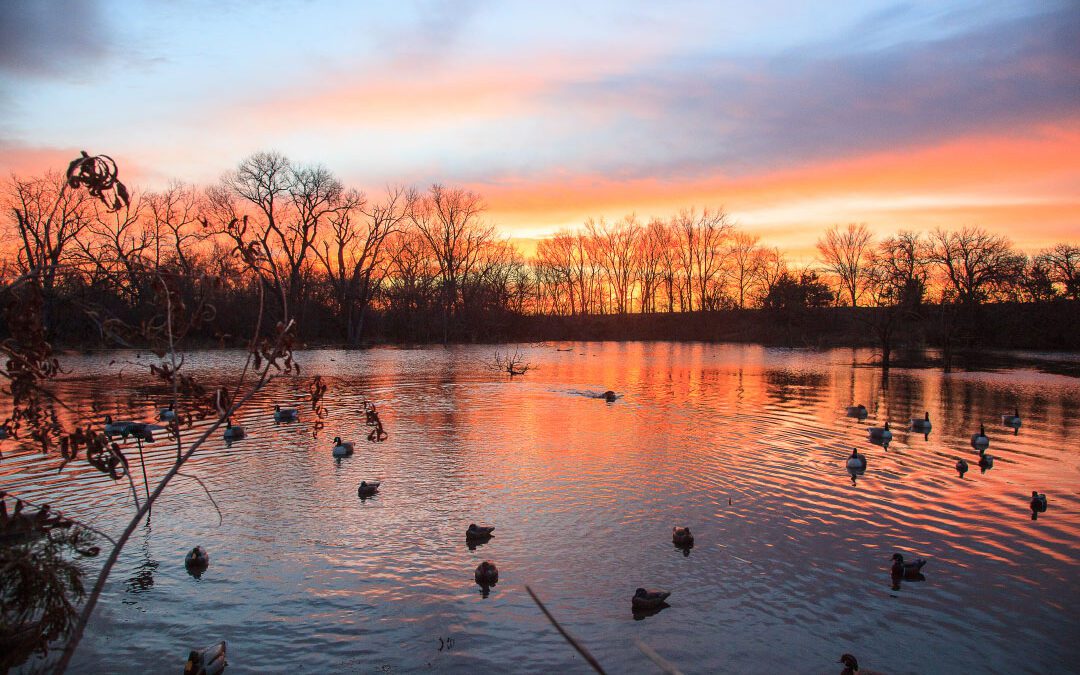Eric Dunn is the kind of American success story that we never get tired of hearing about. Eric is a small town, blue-collar guy from Kansas who built a multi-million dollar business literally from the ground up. When it came time to sit back and smell the roses, he got back to his roots and set out to find his waterfowling paradise. Eric found a chunk of property that looked to be ideal for his needs and made a good faith offer for it. Instead of accepting the terms, the unethical owners used the offer as an auction appraisal, something they’d promised not to do.
Eric is the kind of guy who makes you a promise on a handshake and then stands by it. So when the sellers crawled back to him on auction day and asked him to make a bid, he blew them off and took his son for a drive in the Kansas countryside.
During their drive he discovered a piece of land for sale that was rough by anyone’s standard, yet Eric had the vision to see greatness in the trash-strewn landscape and bought the 11,000-acre tract. In the weeks and months to come, his crews gathered up and filled tractor-trailers with trash and junk, started to develop the land for wildlife, and constructed a beautiful lodge and five other stunning buildings. Hooray Ranch was born.
Kingman isn’t a big town, but its location puts it smack dab in the heart of the Central Flyway. The mostly open ground is a patchwork of farmland, broken by creek bottoms, lakes, and ponds. A look at Google Earth shows just how much water there is in the area. It’s a place where come spring and fall the ducks and geese pour in, finding plenty of food and water to keep them content.
Today, Hooray’s properties are managed exclusively for wildlife—you’re not hunting a farm where you can also find deer, ducks, and geese; you’re hunting properties designed from the outset to maximize the hunting experience.
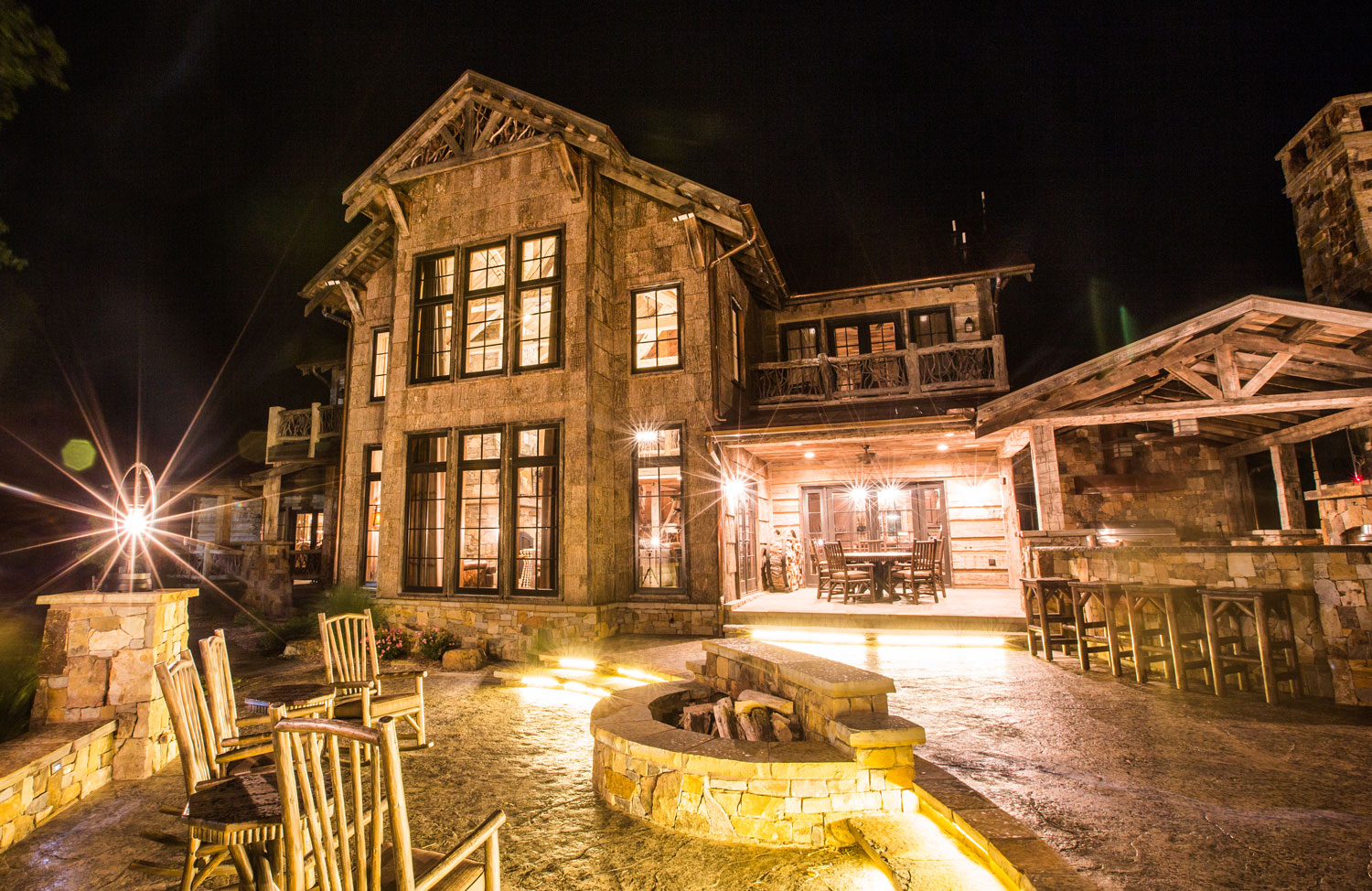
In addition to the land owned by the Dunns, Hooray leases an additional 10,000 or so acres, bringing the total huntable habitat to 20,000 acres. The massive scale of Hooray’s properties enables Eric and his staff to put very little hunting pressure on their waterfowl. In fact, most areas are hunted only once or twice per season. The idea is to have enough honey holes available so clients never hear the dreaded, “You should have been here last week.”
Wedged in between business meetings and the Christmas holiday, our trip to Hooray was a short one by necessity. We arrived at lunchtime on Sunday and were treated to a tour of the property, including the different lodges that simply must be seen in order to fully appreciate. The level of detail that went into the design and execution of every single room at Hooray is staggering. Far from stuffy, Eric and his staff made us feel at home as soon as we walked in the door.
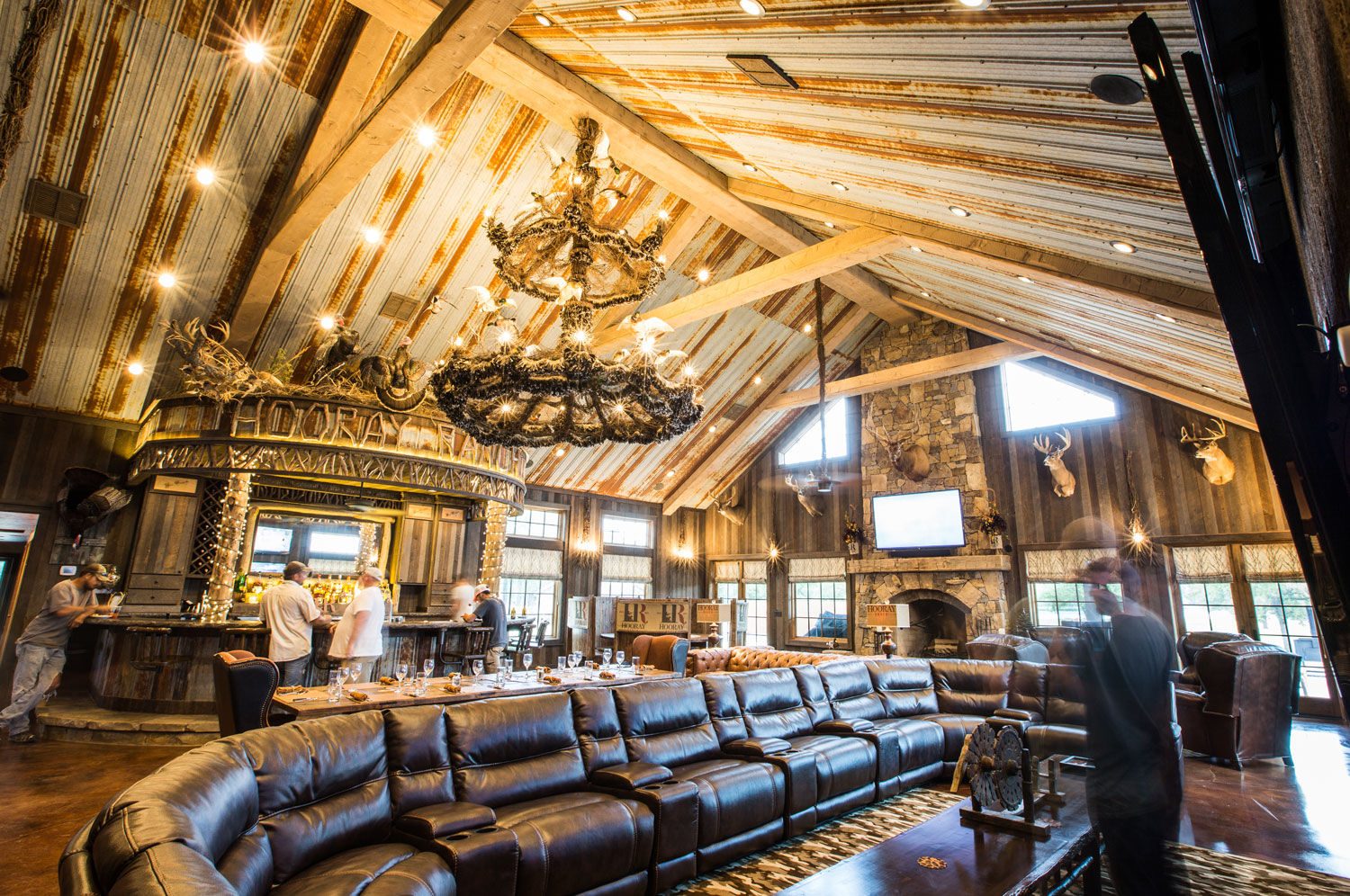
We couldn’t hunt that day, so we spent the afternoon relaxing in the massive main lodge and watching football on a panel of televisions that would make the guys at NASA jealous. A dirty martini helped wipe away the rigors of air travel while the chef prepared dinner. It took all of about five minutes for Eric to have us bent over in belly-laughs. This is probably a good time to tell you that if you’re a stick in the mud who doesn’t like to have a good time, you should probably find somewhere else to hunt.
We rose early the next morning for our trip to the duck blind. The morning was balmy by Kansas-in-December standards, and I left most of the layers of my Sitka waterfowl gear in the room. After a grab-and-go breakfast, we loaded up the Suburbans for a short drive before transitioning our gear into an ARGO to cross the flooded marsh surrounding our blind. The guides tossed out armloads of decoys while we carried our guns and ammo into the blind at water’s edge. Eric took a satisfied look at the decoy spread before joining us in the blind and making sure everyone was comfortable.
After spending much of the fall hunting in the high country for elk, sitting on a bench drinking coffee and waiting for the sun to rise almost felt like cheating.
As the first crack of daylight turned black into gray, I could see we were positioned at the edge of a smallish pond surrounded by tall trees. It was the kind of secluded spot where the ducks prefer to rest after their morning feed, and no matter where they tried to land they would be within shotgun range.
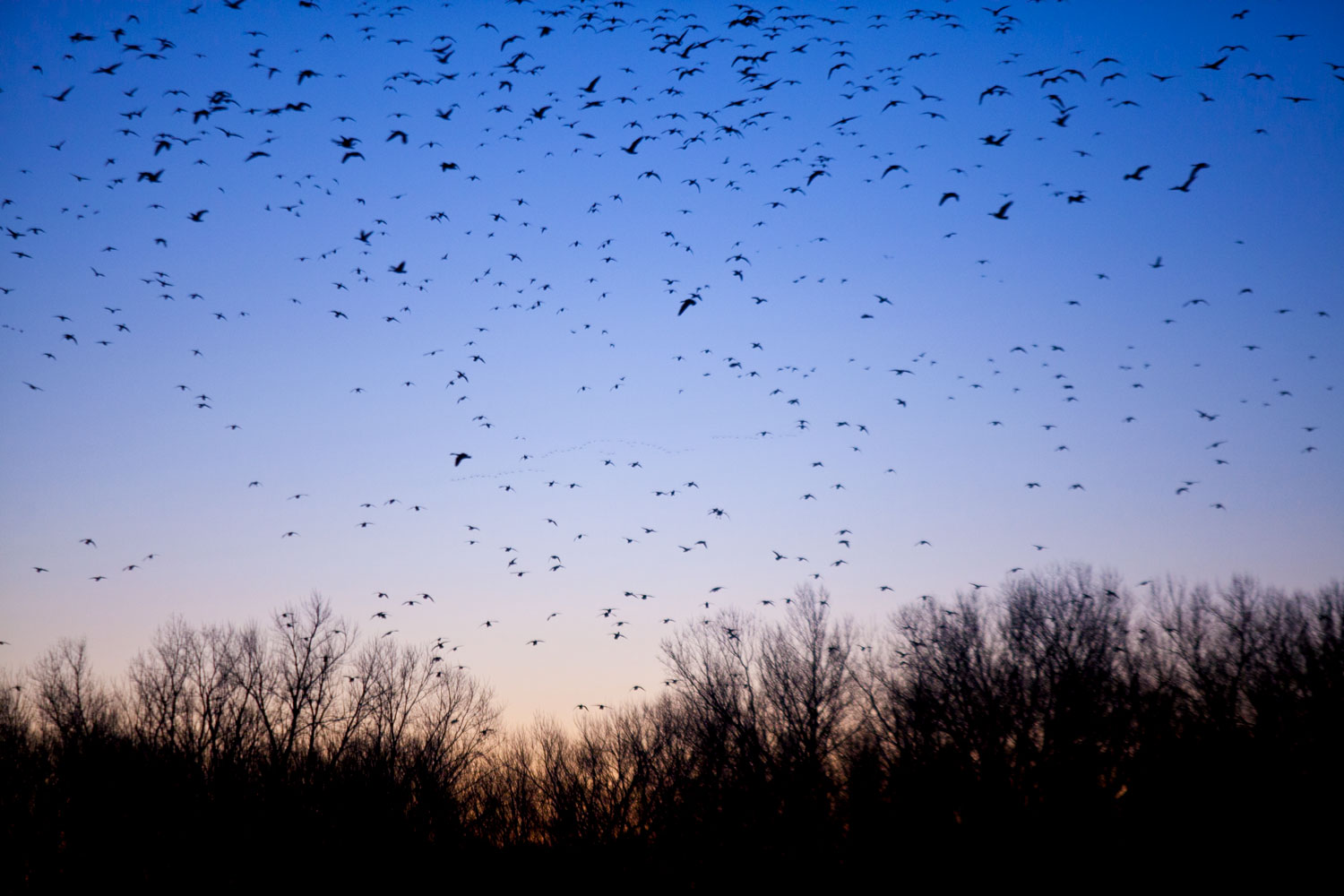
The horizon was barely showing pink when flights of ducks numbering in the hundreds began circling the pond, jockeying for position above the decoys.
“Hold ’em boys . . . let’s just enjoy the show,” Eric said.
Certainly, there was no need to get greedy. There was no need to be quiet, either, as we all stood with our mouths open. Even now I find it hard to come up with the words to describe the sheer mass of waterfowl that staged in the sky above our heads.
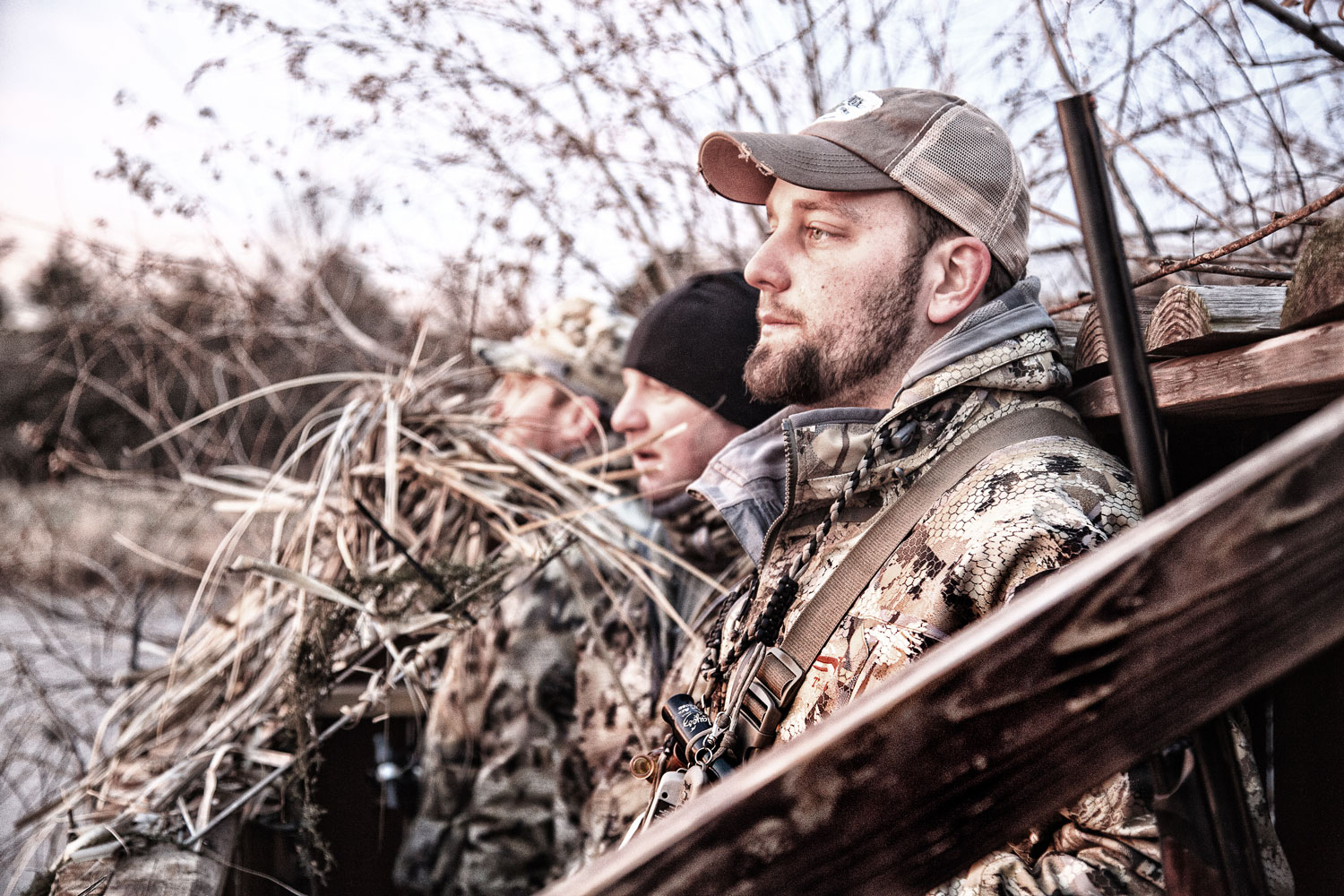
A big flock of 50 or so mallards circled and turned into the wind to begin their approach. When the birds came in, wings flared as they dropped to nearly eye level, we could take no more. Safeties came off and a volley of shots erupted that likely put half of our limit onto the water. No longer restrained, three Labrador retrievers shot across the icy water in a way that satisfied them down to their very DNA.
The sheer volume of birds didn’t change; they just approached in smaller numbers. Any hint of caution on the ducks’ part was overcome by the lure of the decoys and the guides’ calls. Mostly mallards, but also pintails, ringnecks, and teal continued to pour down in threes and fours, giving us a chance to reload and enjoy the spectacle.
I found myself sitting back and taking it all in instead of trying to take every shot that presented itself. It’s not that I grew tired of shooting; it was just such an impressive sight that I didn’t want it to end so quickly. The guides kept careful tally of the birds and were soon giving us a play-by-play of what we could and couldn’t shoot in order to comply with the bag limit.
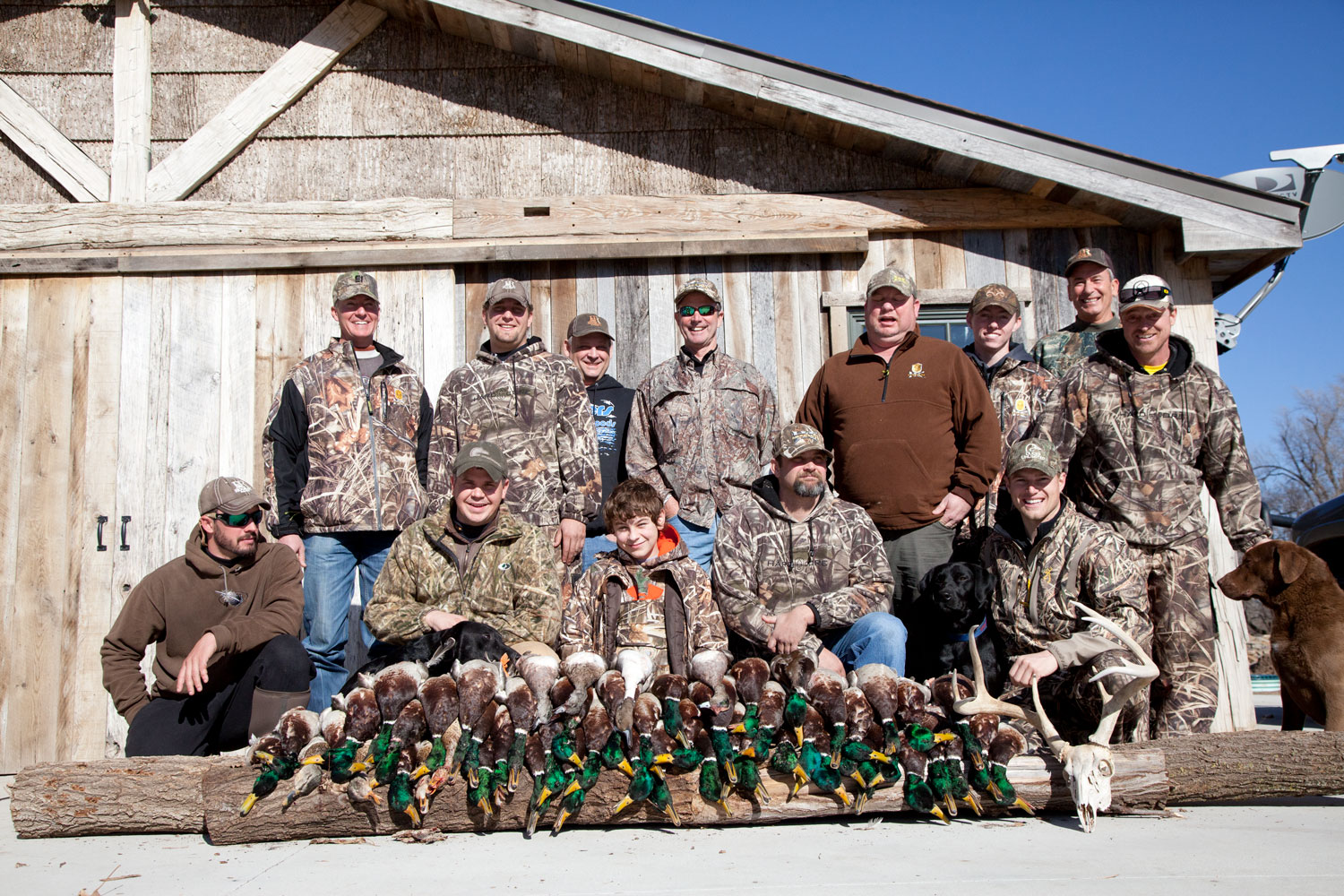
By the time normal human beings were pouring their coffee and stumbling outside to get the newspaper, we were gathering decoys and casing our shotguns. Those of us who were newcomers to Hooray couldn’t wipe the smiles from our faces while Eric, forever the gracious host, was entertained by our awe. He apologized with a grin that no ducks actually landed on the ribs of our gun barrels.
Thirty minutes later we were eating a massive country breakfast back at the lodge and drying our gloves and socks by the roaring fireplace.
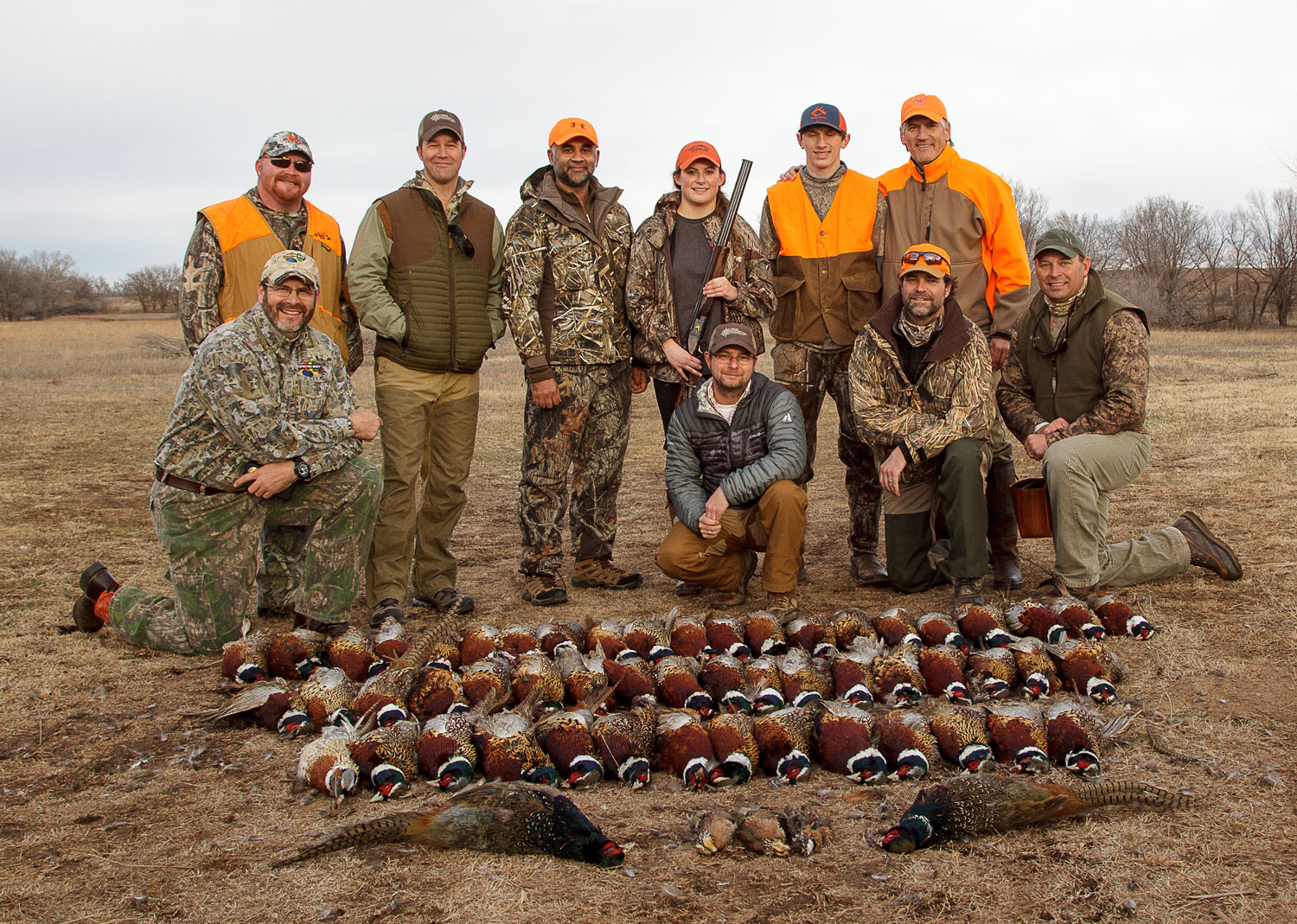
That afternoon saw us spreading out across a prairie that looked as if it ran clear to Canada, unspoiled by a single tree. The guides did a good job of keeping our large group safely on line as the dogs zigged and zagged through a sea of grass. The walking was easy as pheasant hunts go and the birds flushed with regularity. It was the rare rooster that made it away unscathed, and one of the few hunts that I’ve been on where the blockers didn’t get most of the shooting. It was a preserve hunt with no limit, and I’d venture to guess that each hunter bagged a half-dozen birds.
In typical Hooray fashion, about the time you felt like you’d shot and walked enough, it was over and time to board the bus for the ride back to the lodge. Everyone grabbed a cocktail before heading for the showers while the chef worked more of his magic in the kitchen.
At the end of our first hunting day, Eric put things in perspective for me. We’d killed nine limits of ducks that morning, a pile of pheasants that afternoon, enjoyed a gourmet meal for dinner followed by drinks in the main lodge where we watched Nashville recording artist Red Marlow strum out his songs live and unplugged.
Eric took a puff of his cigar and turned to me with a grin, “Hey Keith, you know what we call this at Hooray? Monday.”
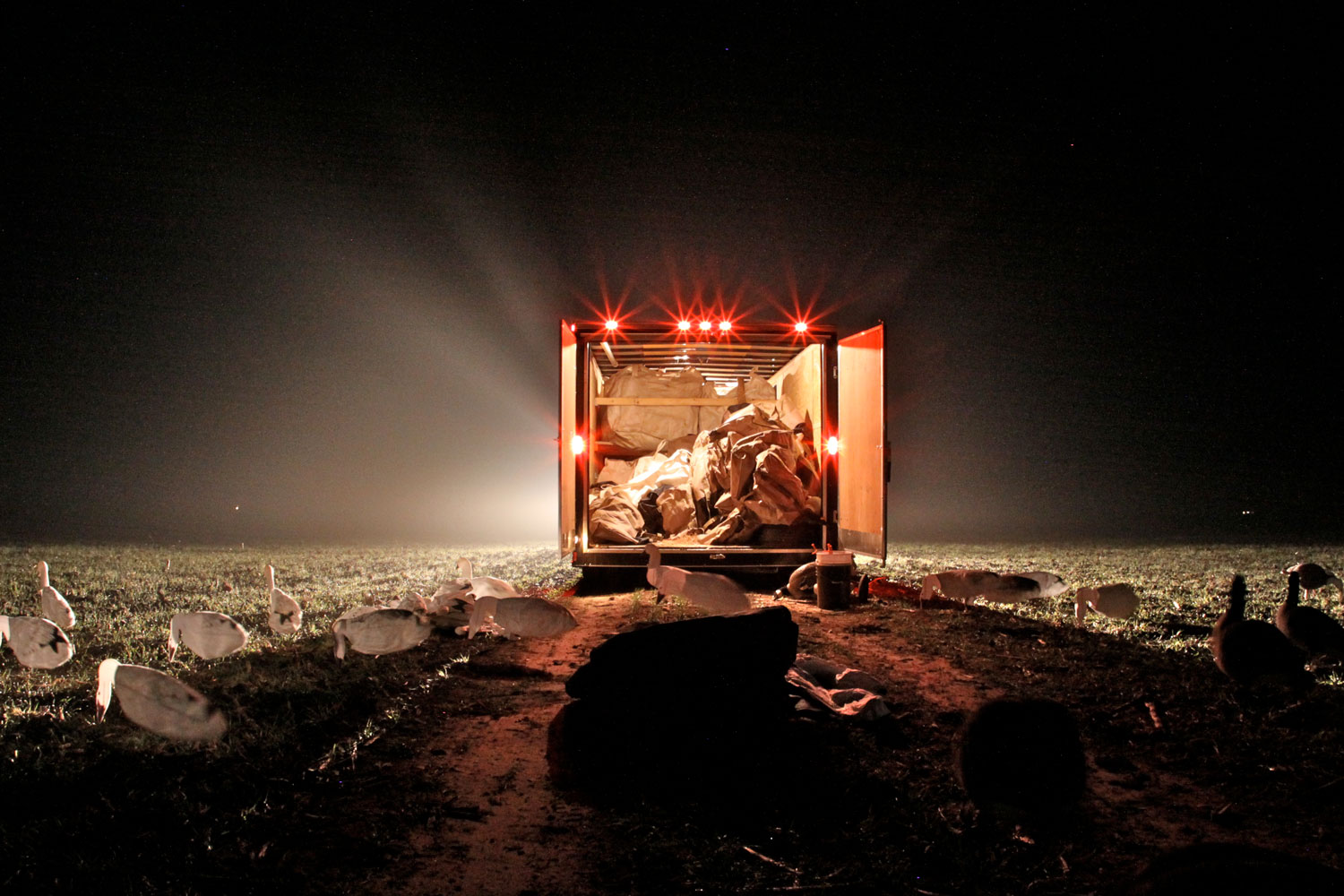
Admittedly, getting out of bed the next morning was a bit more challenging that it had been the previous day, the “Hooray experience” having lasted well into the night. It was also far colder and our morning in the goose blind was expected to be longer than the previous day’s duck blitzkrieg. I piled on every layer that Sitka had sent me and filled my pockets with shells. We quietly made our way into a large Avian-X blind in time to see dawn break above 800 decoys that the guides had spread in the field by headlamp.
The terrain was flat like only Kansas can be; our camouflage had to be perfect and our movement kept to an absolute minimum to avoid the cautious eyes of thousands of geese that shortly after sunrise began lifting off a nearby reservoir. I’m a young man with, hopefully, many goose hunts ahead of me, but I cannot imagine that I’ll ever top our first opportunity of the morning.
No fewer than 300 big Canadas descended on our spread, filling the sky above us like the flying monkeys from the Wizard of Oz. Not 300 geese on the horizon; 300 geese with their wings spread and their feet down, rapidly dropping toward our decoys.
Eric gave the signal and every shooter emptied his gun, as if in self-defense. My Benelli claimed a bird for every shell, as the shots were too close for me to bugger up. We had the better side of a limit on the ground before we ever got a chance to reload.
While the guides worked their calls to bring in the next wave, Eric began passing around hot breakfast sandwiches to replace the calories that we’d burned during the 20-yard walk to the blind; nobody is going to lose weight at Hooray.
We never matched the sheer numbers of the morning’s opening, though the geese came in steady and the shots were close and relatively easy, even for the hunters wielding 20-gauge guns.
By mid-morning it was time for me to head to Wichita to catch my flight, and I begrudgingly left the field knowing full well that I was leaving the best waterfowl hunt of my life.
We said our goodbyes after a hearty lunch, and to add to the misery of leaving, I was informed by the chef that filets were on the dinner menu for that evening.
There are a lot of hunts on my short list, but a return to Hooray is certainly near the top. My time there, while brief, was a blast from beginning to end: the people, the lodge, and, of course, the massive numbers of birds made for an unforgettable experience.
If You Want To Go: The High Adventure Company
I met John Burrell, owner of The High Adventure Company, by chance back in 2003. I was tagging along on a friend’s safari and “J.B.” was the agent in charge of getting us there. Since that experience, I’ve booked a number of hunts with John and his company and referred more hunters to them than I can count. I send folks to the High Adventure Company because of the high-quality hunting experience they provide. I know that I’m not going to steer a friend wrong.
Many agencies offer a catalog of hunts a mile long, and from what I’ve witnessed, there’s simply no way to manage that broad a business while maintaining a high level of knowledge about what you’re selling. Like a restaurant that only has a few items on the menu but cooks them all to perfection, John Burrell’s hunt portfolio is small but dependably great.
If you want a great stag hunt, he’ll send you to Tipiluke in Patagonia; if it’s an ibex you desire, he’s got the perfect spot in Spain. If ducks and geese get your blood pumping, J.B. will send you to Hooray.
If you want to hunt Hooray, give the High Adventure Company a call. John and his team are the exclusive agents for Hooray and will be glad to help make your waterfowl dreams a reality. Call (800) 847-0834 or visit www.highadventurecompany.com.
This article originally appeared in the 2016 September/October issue of Sporting Classics magazine. Photographs by Keith Wood.

